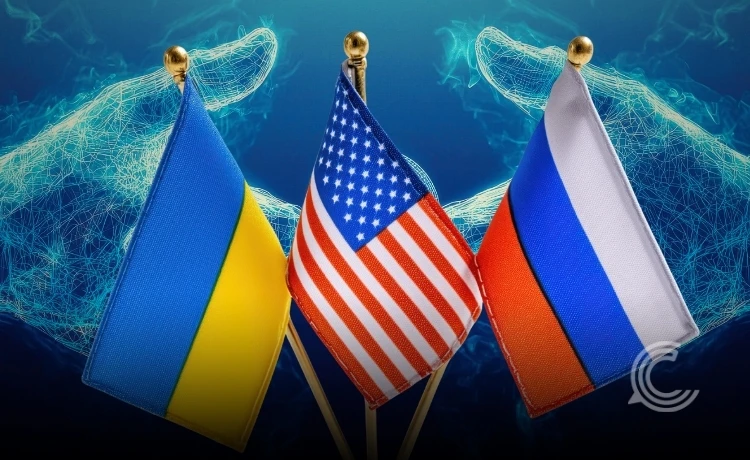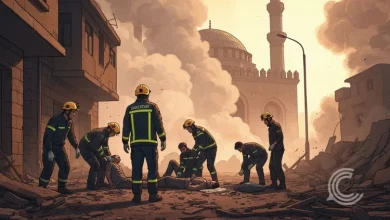US-Backed Peace Proposal for Ukraine: A Detailed Look at the Draft Framework

Key Points:
- The 28-point draft proposal, reportedly prepared by U.S. and Russian negotiators, includes requirements for Ukraine to cede additional territory and accept limits on its military capacity
- The plan calls for Ukraine to renounce its bid for NATO membership and accept the de facto recognition of Russian control over Crimea and parts of the Donbas region
- While Ukrainian President Volodymyr Zelenskyy’s office has acknowledged receiving the “vision,” European partners have voiced deep concerns that the framework leans too heavily in favor of Moscow’s long-standing demands
A draft of a 28-point peace proposal for Ukraine, reportedly backed by the United States, is now circulating, sparking intense debate across Kyiv, Washington, and Europe. This diplomatic effort seeks to establish a comprehensive framework to end the protracted war with Russia, but key provisions demanding significant Ukrainian concessions have drawn sharp criticism.
Unpacking the Peace Framework
The ambitious 28-point document, which a US official described as a “live document” subject to changes, covers a wide range of political, military, and economic terms aimed at securing a lasting ceasefire and a path to peace. US Army Secretary Daniel Driscoll delivered the written plan to President Zelenskyy on Thursday, marking a direct diplomatic push by Washington.
Territory and Sovereignty
A central and highly contentious element of the draft involves territorial arrangements. According to reports, the plan requires Ukraine to withdraw its troops from remaining areas of the Donetsk region still under its control, creating a neutral demilitarised buffer zone .
Furthermore, the proposal suggests the de facto recognition of Russian control over Crimea, Luhansk, and Donetsk, while freezing the line of contact in the Kherson and Zaporizhzhia regions. Crucially, while the United States and other international parties would recognize these regions as Russian, Ukraine would reportedly not be required to formally do so.
Military Limits and NATO Renunciation
The draft also lays out sweeping restrictions on Ukraine’s future military and security posture. Key concessions include an amendment to the Ukrainian constitution to formally renounce NATO membership. Furthermore, the plan calls for Ukraine to reduce the size of its armed forces by more than half, capping personnel at approximately 600,000, and relinquishing all long-range weapons, according to Reuters. In exchange, the document outlines a commitment that any future Russian invasion would trigger a “decisive coordinated military response,” though the specifics of U.S. participation remain unclear.
International and Domestic Reactions
The leak of the framework has prompted immediate and varied reactions from the primary stakeholders, highlighting the immense difficulties in forging a mutually acceptable path to peace.
Kyiv’s Hesitation
President Zelenskyy confirmed receipt of the proposal, describing it as a U.S. “vision,” and stating he was ready for “constructive, honest, and swift work” with Washington to explore it. However, high-ranking Ukrainian officials have privately and publicly expressed alarm. Zelenskyy’s adviser, Mykhailo Podolyak, reportedly condemned the terms as amounting to “unconditional capitulation,” reflecting the sentiment that the draft closely mirrors Moscow’s maximalist demands, Reported by The Washington Post. Ukrainian leaders have long insisted they will not cede territory not already militarily seized by Russia.
European Caution
European allies, many of whom were reportedly excluded from the drafting process, have reacted with caution and skepticism. EU foreign policy chief Kaja Kallas, for example, noted the absence of clear reciprocal concessions from Russia, while French Foreign Minister Jean-Noël Barrot underscored that peace must not be a “capitulation” for Ukraine, Reported by ANI. These European capitals are demanding full inclusion in any future negotiations, stressing that a lasting peace settlement requires both Ukrainian and European buy-in.
Moscow’s Position
The Russian side, which reportedly had an active role in shaping the framework via an informal backchannel, has expressed a degree of optimism. Russian envoy Kirill Dmitriev stated he was encouraged, noting that “the Russian position is really being heard.” However, the Kremlin has avoided formally endorsing the proposal, with spokesman Dmitry Peskov maintaining that no formal consultations with the US are currently underway and reiterating Moscow’s long-standing demand that any agreement must address its security concerns. The broader plan also reportedly includes provisions for phased sanctions relief and Russia’s reintegration into the G8.
The current draft clearly asks Ukraine to make difficult, painful compromises. The coming days will be critical as Washington applies its influence to convince Kyiv and its European partners that this framework can be negotiated into a truly equitable and durable peace proposal.



